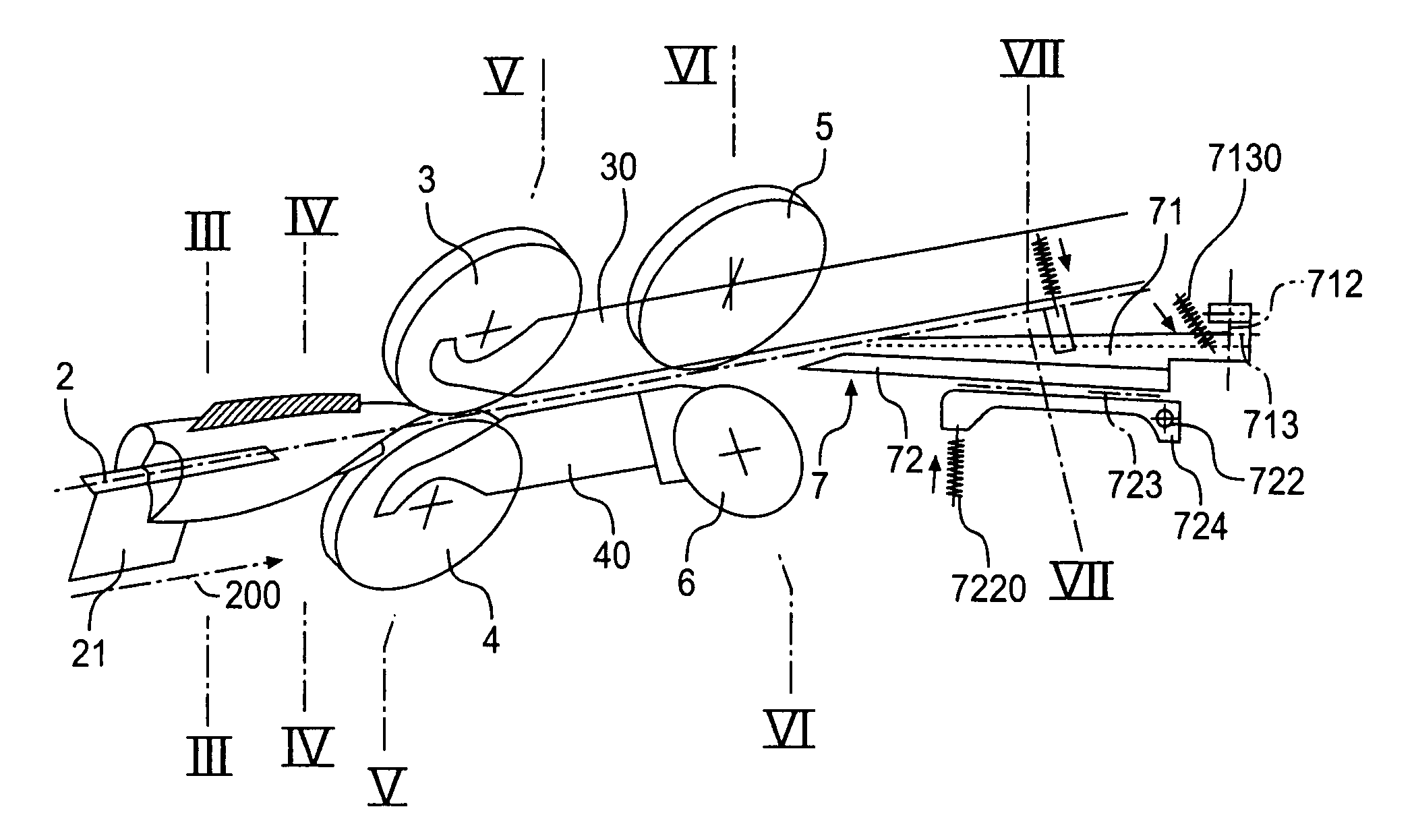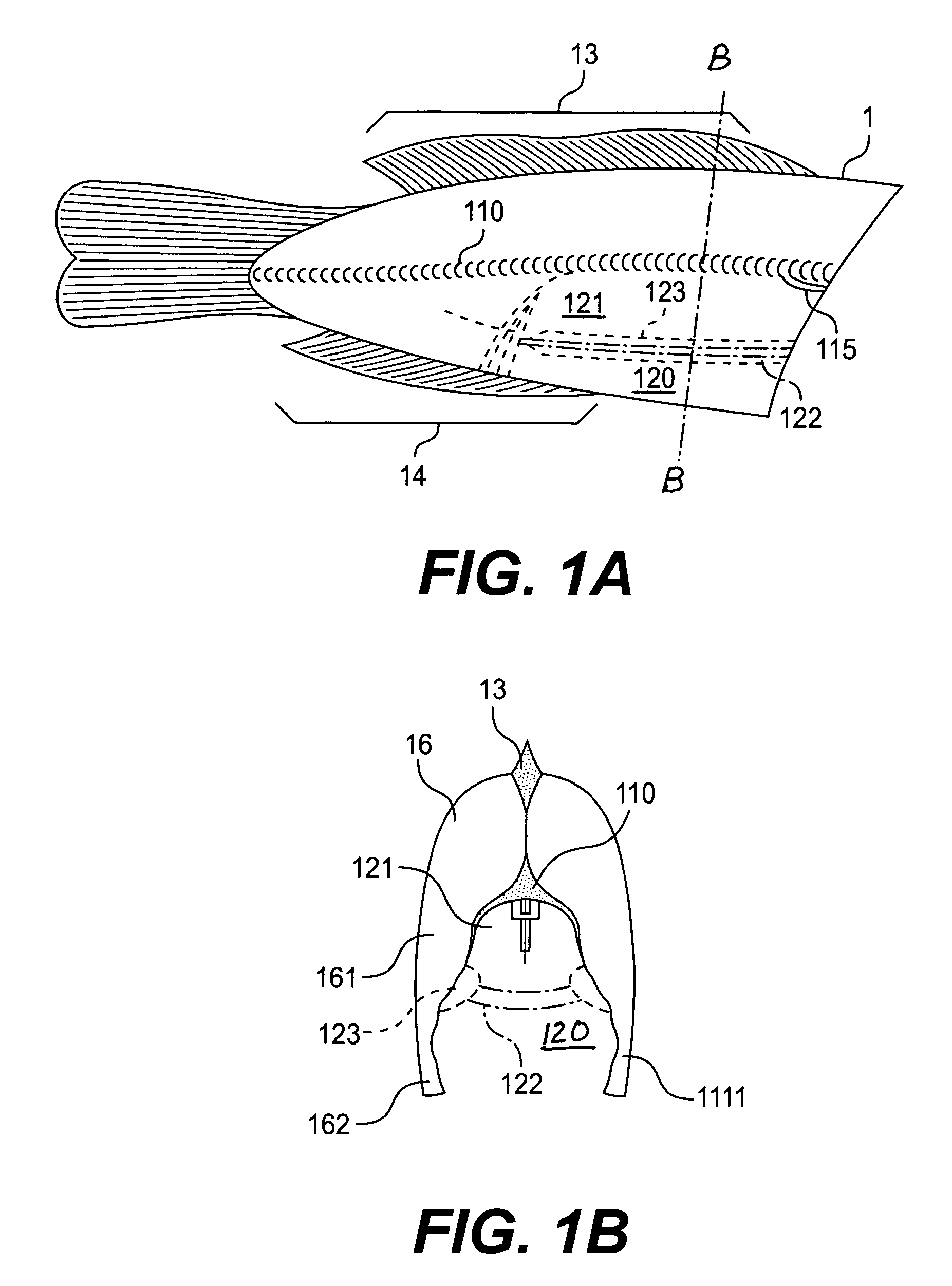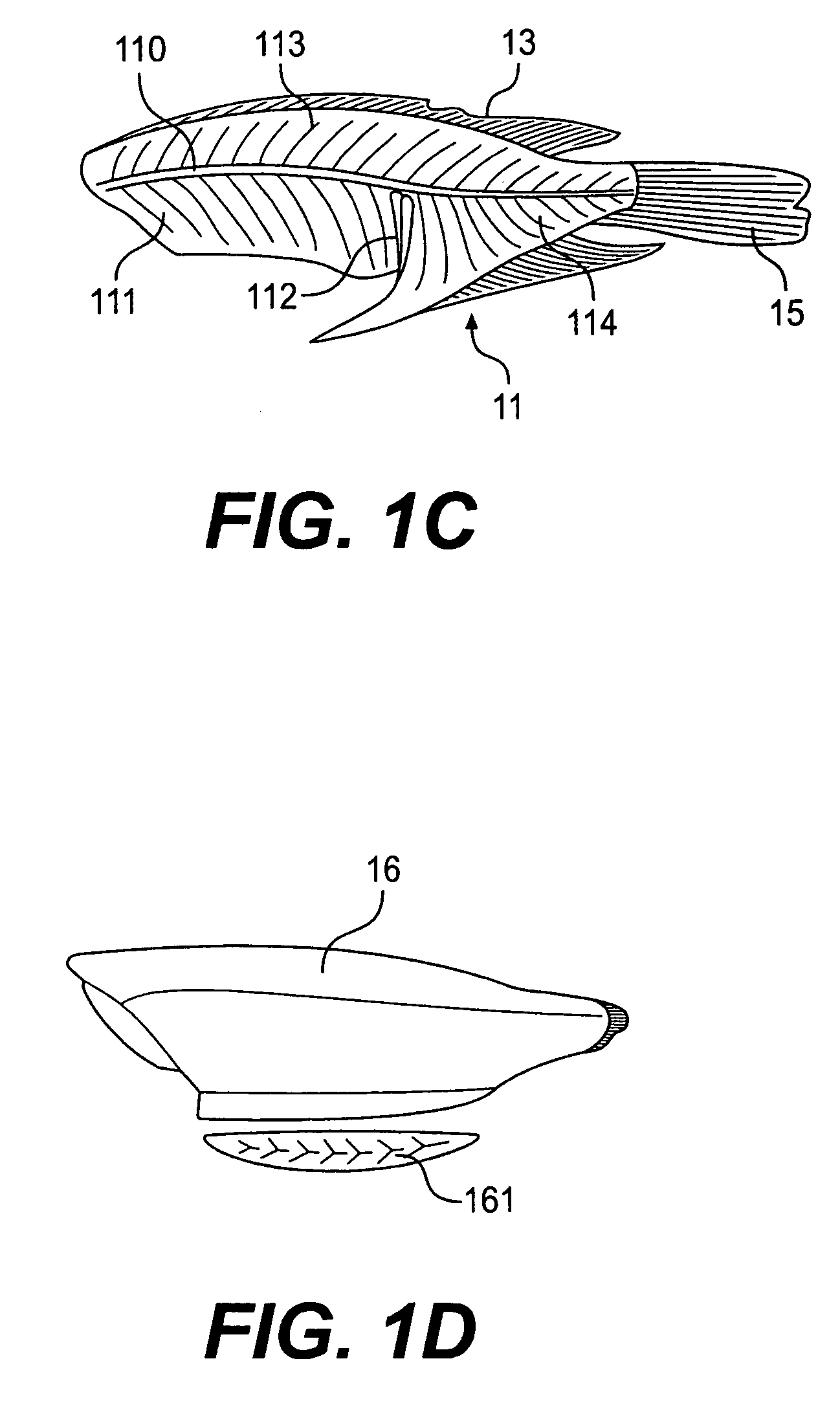Method and device for filleting killed and headless fish, the abdominal cavity of which is opened up
a technology of headless fish and filleting method, which is applied in fish filleting, butchering, fish processing, etc., can solve the problems of quality and yield, inability to ensure the separation of fillets, and satisfactory filleting
- Summary
- Abstract
- Description
- Claims
- Application Information
AI Technical Summary
Benefits of technology
Problems solved by technology
Method used
Image
Examples
Embodiment Construction
[0036]The fish intended for processing is in the form of a fish body 1 which has been beheaded, slaughtered and eviscerated and is open in the ventral cavity, as can be seen in FIGS. 1A and B. This is the body of a fish of the species tilapia with essentially the following properties: these fish have a relatively thick main bone 110, generally also referred to as the spine, from which, as can be seen in particular in FIG. 1C, a view of the skeleton or bone structure 11, dorsal bones 113 extend upwardly over the whole length of the fish and ventral bones 114 extend downwardly in the region in front of the caudal fin 15, while in the region of the ventral cavity 1curved around the latter, also starting from the spine 110, the flank or rib bones 111 extend. At the end of the ventral cavity, running from the spine 1to the anus, the fish of the tilapia species have a relatively compact and rigid anal bone 112 which extends towards the beginning of the ventral fins 14. These ventral fins ...
PUM
 Login to View More
Login to View More Abstract
Description
Claims
Application Information
 Login to View More
Login to View More - R&D
- Intellectual Property
- Life Sciences
- Materials
- Tech Scout
- Unparalleled Data Quality
- Higher Quality Content
- 60% Fewer Hallucinations
Browse by: Latest US Patents, China's latest patents, Technical Efficacy Thesaurus, Application Domain, Technology Topic, Popular Technical Reports.
© 2025 PatSnap. All rights reserved.Legal|Privacy policy|Modern Slavery Act Transparency Statement|Sitemap|About US| Contact US: help@patsnap.com



